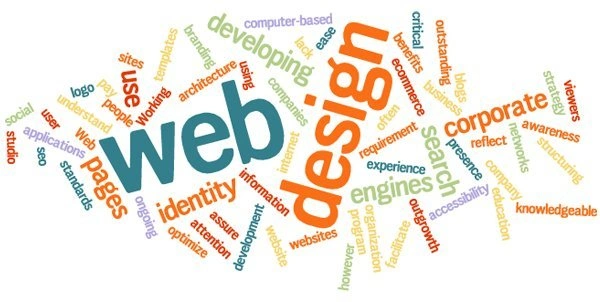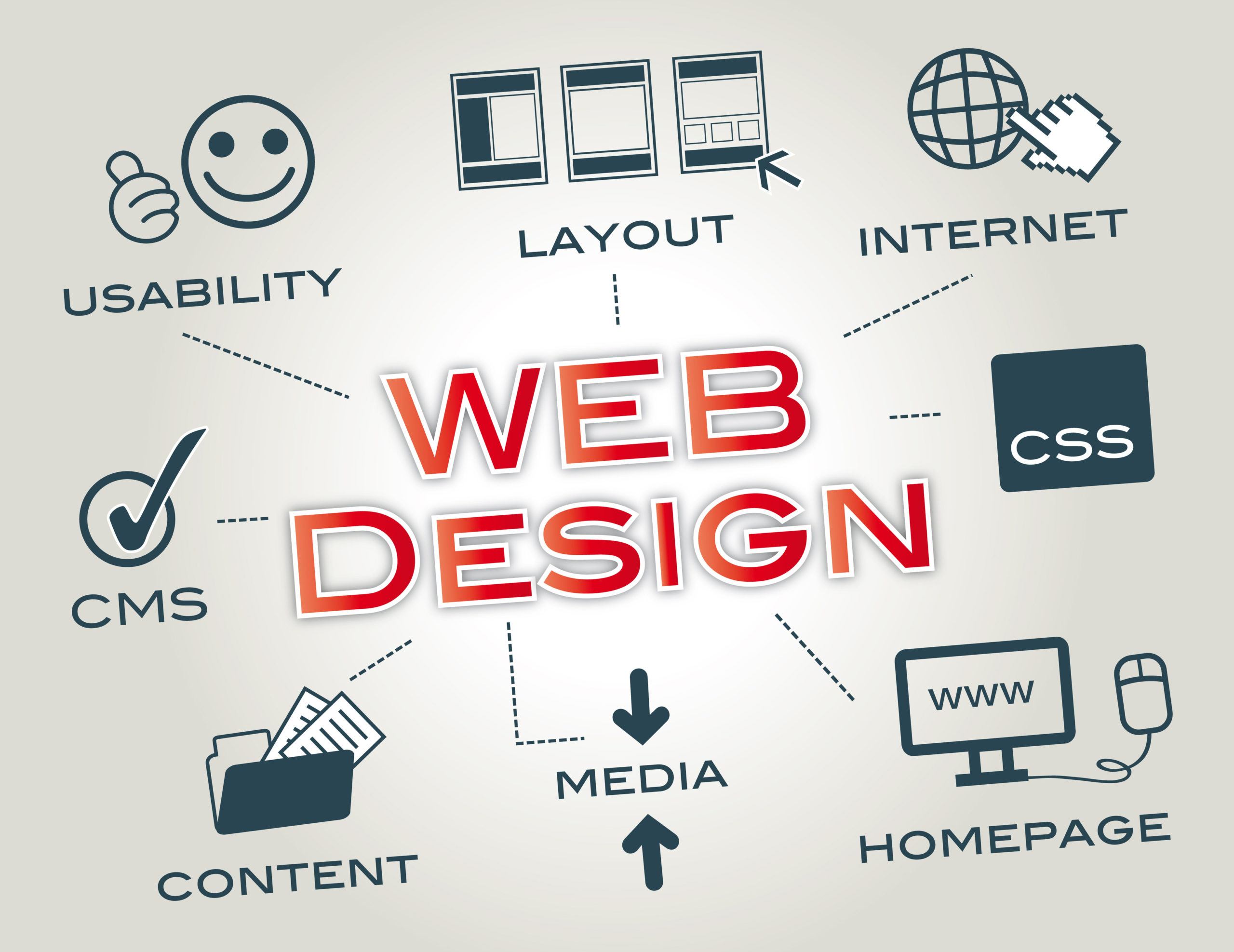The Relevance of User Experience in Reliable Web Design Strategies
User experience (UX) functions as a keystone in efficient web design approaches. It forms exactly how users connect with a website, influencing their contentment and chance of returning. A well-designed UX can enhance engagement through instinctive navigating and receptive layouts. Overlooking these elements may lead to disappointment and boosted bounce rates. Comprehending the details of UX is necessary for designers intending to create compelling electronic experiences that resonate with varied audiences. What elements really drive successful user involvement?
Understanding User Experience and Its Impact on Design
User experience (UX) is frequently perceived as a plain aspect of internet style, it basically shapes exactly how individuals engage with an internet site. UX incorporates all facets of the user's communication, including functionality, accessibility, and general satisfaction. A positive UX fosters engagement, motivating individuals to explore the website and return in the future. On the other hand, an adverse experience can cause irritation, resulting in high bounce rates and lost possibilities for conversion.
Design components like design, navigating, and content company play crucial duties in shaping this experience. Effective UX layout expects user requirements and choices, making certain that information is visually attractive and conveniently accessible. In addition, comprehending user habits via analytics can give useful insights, notifying style decisions that boost use. Eventually, an extensive understanding of UX allows designers to produce websites that not only attract users however likewise promote meaningful interactions that straighten with organization objectives and user expectations.
Secret Principles of Efficient User Experience
Efficient user experience pivots on numerous crucial concepts that enhance web site capability and involvement. Instinctive navigating layout, responsive design fundamentals, and the significance of visual power structure are vital elements that contribute to a seamless communication between users and web content. Understanding these principles permits developers to create even more straightforward and available electronic environments.
Instinctive Navigating Design
When customers experience a web site, user-friendly navigating style functions as a crucial gateway to their total experience. Efficient navigating allows individuals to effortlessly situate the information they seek, improving their interaction with the website. Key concepts consist of clear labeling, rational organization, and consistent placement of navigating elements. Tags should be straightforward, permitting individuals to anticipate the material they will locate. A well-structured hierarchy aids individuals comprehend the partnership between different areas, guiding them with the web site effortlessly. Additionally, responsive food selections and conveniently obtainable links add to a fluid experience across tools. By prioritizing intuitive navigating, designers can greatly minimize user disappointment and rise involvement, inevitably cultivating a favorable perception of the site and its material.
Responsive Layout Basics
A well-structured navigation system naturally brings about the requirement for a receptive format, which is important in today's varied electronic landscape. A receptive layout warranties that websites function seamlessly across different tools, including mobile phones, desktops, and tablets. This versatility improves user experience by permitting web content to be conveniently available and aesthetically systematic, despite screen size. Trick concepts of receptive design consist of liquid grids, versatile images, and media questions, which facilitate suitable viewing. In addition, prioritizing touch-friendly elements improves communication on mobile phones. By applying a responsive format, developers can fit individuals' demands, minimize bounce rates, and increase engagement. Inevitably, a well-executed responsive style fosters a favorable user experience, encouraging visitors to check out the site additionally.
Aesthetic Power Structure Relevance
Visual power structure plays a crucial function in directing individuals via an internet site, making certain that crucial info records their interest first. By strategically utilizing size, comparison, spacing, and shade, developers can create a clear pathway for users to adhere to. Bigger components often attract the eye, suggesting their importance, while contrasting colors can highlight telephone calls to action. Furthermore, regular alignment and group of relevant content enhance comprehension, making navigating intuitive. Efficient use of aesthetic power structure not just enhances usability but also supports the general visual of the website, cultivating a positive user experience. When users can easily determine the most important information, they are more probable to involve with the material, bring about increased contentment and interaction with the internet site.
The Function of Usability in Web Design
Use plays a necessary function in web design, especially with navigating simplicity and adherence to ease of access requirements. Effective navigation boosts user satisfaction by enabling visitors to locate info promptly and with ease. Meeting accessibility requirements guarantees that all individuals, regardless of their capacities, can effectively engage with the website.
Navigating Simplicity
Simplicity in navigation stands as a keystone of effective web design, significantly affecting user experience. A structured navigating system allows customers to locate information quickly and with ease, lowering stress and enhancing fulfillment. Clear labeling and rational framework are essential elements, leading individuals easily through the internet site. Redundant web links or extremely intricate food selections can disorient users, causing boosted bounce rates. Additionally, mobile responsiveness must be taken into consideration, guaranteeing navigating stays uncomplicated throughout gadgets. Reducing and focusing on necessary web pages clutter further sustains user engagement. Reliable navigating not only fosters a positive experience however also motivates users to check out the website better, inevitably leading to higher conversion prices. Hereof, navigating simplicity functions as an essential consider the overall performance of web design techniques.
Ease of access Criteria
User involvement is greatly boosted when web sites stick to accessibility requirements, ensuring that all users, no matter their capacities, can browse and engage properly. Conformity with these standards not just expands the target market but also boosts general user complete satisfaction. Easily accessible style incorporates features such as text choices for pictures, key-board navigation, and sufficient shade comparison, which promote usage by people with specials needs. On top of that, executing these criteria can positively impact seo (SEO) by improving website framework and clarity. As web design advances, prioritizing access becomes vital in promoting an inclusive electronic atmosphere. By accepting these requirements, designers contribute to an extra equitable net, inevitably driving user loyalty and involvement.
Significance of Responsive Style for User Involvement
As customers progressively gain access to web sites with a variety of tools, the value of responsive layout official website becomes extremely important for engaging individuals successfully. Receptive style assurances that a website adapts perfectly to various screen sizes, supplying a perfect viewing experience no matter of the gadget used. This adaptability boosts user involvement by assisting in simpler navigating and interaction with content.
When individuals encounter an internet site visit this page that is receptive, they are more probable to remain much longer, discover even more, and return in the future. A properly designed responsive layout reduces the aggravation typically related to zooming and scrolling on smaller sized displays, thus decreasing bounce rates. Additionally, responsive style can favorably influence online search engine rankings, as search engines focus on mobile-friendly internet sites. In today's digital landscape, where mobile use remains to rise, carrying out receptive style is not just helpful, yet important for keeping user interaction and assuring a favorable experience throughout all devices.
Enhancing Load Times for Better User Fulfillment

To enhance tons times, internet developers should prioritize optimizing images, leveraging browser caching, and lessening HTTP requests. Furthermore, employing Content Distribution Networks (CDNs) can accelerate material shipment by dispersing it throughout different geographical areas. Streamlining code, such as compressing CSS and JavaScript documents, additionally contributes to faster filling rates.
Ultimately, a dedication to improving tons times not just enhances user satisfaction however additionally strengthens brand commitment and boosts the probability of repeat check outs. A swift, seamless experience is essential for preserving users and promoting favorable communications.
The Influence of Visual Pecking Order on User Communication
Visual pecking order acts as an important aspect in leading user interaction on a website. By organizing content in such a way that prioritizes info visually, designers can influence just how individuals involve and browse with a site. This power structure is established via various layout methods, including size, shade, comparison, and spacing. Larger font styles or strong colors draw focus to important components, such as telephone calls to action or headlines, while controlled shades and smaller fonts can indicate subservient details.
Reliable aesthetic hierarchy assists users swiftly recognize what is crucial, reducing cognitive lots and boosting use. It allows for instinctive navigating, making it less complicated for users to find what they need without stress. As individuals connect with a web site, a well-structured aesthetic power structure promotes a more gratifying experience, ultimately causing greater interaction and conversion rates. Developers must prioritize these concepts to create an user-centered and reliable web environment.
Determining User Experience: Techniques and tools

Often Asked Concerns
Exactly How Can I Boost My Website's User Experience on a Budget plan?
To enhance an internet site's user experience on a budget, one can maximize web page tons rate, streamline navigating, apply receptive design, boost material clarity, and collect user comments for constant refinements, ensuring a rewarding site visitor experience.
What Prevail User Experience Errors to Prevent in Web Design?
Usual user experience blunders in web design consist of chaotic formats, inadequate navigation, sluggish filling times, absence of mobile responsiveness, disregarding availability, irregular branding, and failing to prioritize user comments - Web Design Agency. Each can substantially impede total website effectiveness
Exactly how Often Should I Update My Site for Better User Experience?
Websites should be upgraded on a regular basis, ideally every couple of months, to preserve optimal user experience. Constant updates aid address usability issues, revitalize web content, and adapt to transforming user demands, guaranteeing the website continues to be relevant and appealing.

Can User Experience Effect Search Engine Optimization Rankings on My Site?
User experience can substantially affect search engine optimization positions, as online search engine prioritize web sites that use smooth navigation, quick loading times, and interesting web content. A positive user experience can result in reduced bounce rates and higher search presence.
What Function Does Accessibility Play in User Experience Layout?
Accessibility plays a vital duty in user experience style by making sure that all individuals, despite capabilities, can connect and navigate with a website successfully. This inclusivity boosts overall satisfaction and involvement amongst diverse individuals.
User experience (UX) is frequently viewed as a plain facet of internet design, it basically shapes exactly how users communicate with a web site. User involvement is substantially improved when web sites adhere to availability requirements, making sure that all users, regardless of their capacities, can navigate and connect effectively. Gauging user experience (UX) is important for recognizing how effectively a site fulfills the needs of its individuals. Additionally, use testing, where real individuals navigate the site while observers note problems, uses direct feedback on user experience. Common user experience errors in web layout include chaotic formats, bad navigating, slow packing times, absence of mobile responsiveness, ignoring access, inconsistent branding, and falling short to prioritize user feedback.